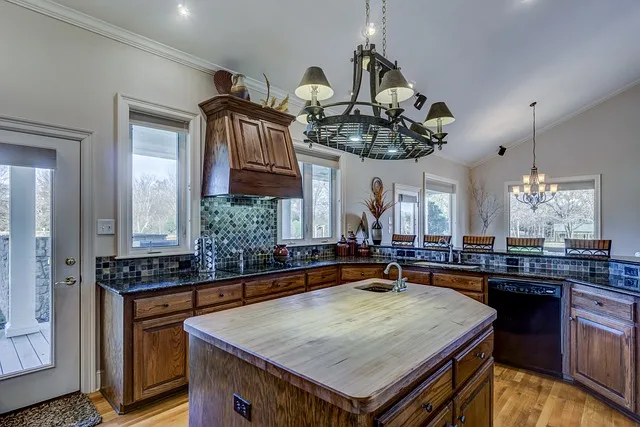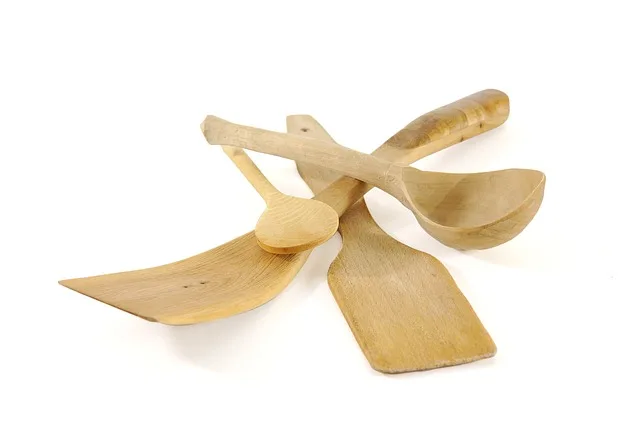First things first, grab a tape measure. You’ll want to measure the width, height, and depth of the space where your cabinets will go. Start by measuring the width from one wall to the other. Don’t forget to account for any appliances or fixtures that might be in the way. It’s like playing Tetris—every piece needs to fit just right!
Next up, height. Measure from the floor to the ceiling, or to the top of your countertop if you’re going for a specific style. This is where you can really let your creativity shine. Are you dreaming of tall cabinets that reach the ceiling? Or maybe you prefer a more open look? Either way, knowing your height will help you make that decision.
Now, let’s talk depth. Standard cabinets are usually about 24 inches deep, but if you’re working with a smaller kitchen, you might want to consider shallower options. Think of it like choosing between a deep dish pizza and a thin crust—both are delicious, but they serve different purposes!
Lastly, always double-check your measurements. It’s like making sure you’ve got all your ingredients before you start cooking. A little extra time spent measuring can save you a world of headaches later on. So, roll up your sleeves, grab that tape measure, and let’s get those cabinets perfectly fitted!
Mastering the Art of Measurement: Your Ultimate Guide to Kitchen Cabinet Sizing
First off, grab a trusty tape measure. You’ll want to measure the height, width, and depth of your space. Think of it as taking the vital stats of your kitchen. Start from the floor to the ceiling for height, and don’t forget to account for any crown molding or light fixtures that might get in the way. For width, measure from wall to wall, and for depth, check how far out you want your cabinets to extend.
Now, here’s a little tip: always measure in multiple spots. Walls can be wonky, and you don’t want to end up with cabinets that don’t fit. It’s like trying to wear shoes that are two sizes too small—painful and totally avoidable!
Next, consider the layout. Are you going for a U-shape, L-shape, or maybe a galley kitchen? Each design has its own quirks, and understanding these will help you visualize how your cabinets will flow in the space.
And let’s not forget about the appliances! Make sure to measure around your fridge, oven, and dishwasher. You wouldn’t want to install cabinets only to find out your new oven doesn’t fit. It’s all about creating a harmonious kitchen where everything has its place.
Precision Matters: Top Tips for Measuring Kitchen Cabinets Like a Pro
First off, grab a reliable tape measure. You wouldn’t use a butter knife to cut a steak, would you? The same goes for your measuring tools. A sturdy tape measure ensures accuracy, so you can trust your numbers. Start by measuring the width, height, and depth of your existing cabinets. Don’t just eyeball it; take the time to measure each section. You might be surprised at how different they can be!
Next, consider the space around your cabinets. Think of it like a dance floor—there needs to be enough room for everyone to move comfortably. Measure the space between cabinets, appliances, and walls. This will help you avoid any awkward gaps or tight squeezes later on.
Now, let’s talk about the importance of double-checking your measurements. It’s like proofreading an essay; one small mistake can change the whole meaning. Measure twice, cut once! Write down your numbers clearly, and if you can, have a buddy verify them. Two sets of eyes are better than one, especially when it comes to ensuring everything fits perfectly.
Lastly, don’t forget about the height of your cabinets. If you’re planning to install upper cabinets, consider the height of your ceiling and the reachability of those top shelves. You want to avoid playing a game of “how high can I reach?” every time you need a dish.
With these tips in your back pocket, you’ll be ready to tackle your kitchen cabinet measurements with confidence and ease!
Avoid Costly Mistakes: Essential Steps to Accurately Measure Your Kitchen Cabinets
First off, grab a reliable tape measure. You wouldn’t want to use a flimsy one that could give you inaccurate readings. Start by measuring the width, height, and depth of your existing cabinets if you’re replacing them. If you’re starting from scratch, think about the space you have. Measure the wall where the cabinets will go, and don’t forget to account for any appliances or fixtures that might get in the way.
Now, here’s a pro tip: always measure twice! It’s like that old saying, “measure once, cut twice.” You want to be absolutely sure of your numbers before making any purchases. And while you’re at it, jot down your measurements in a notebook or on your phone. Trust me, you’ll thank yourself later when you’re knee-deep in cabinet options.
Next, consider the layout. Are you going for a U-shape, L-shape, or maybe a galley style? Visualizing your kitchen can help you understand how the cabinets will fit into the overall design. Think of it like a puzzle; each piece needs to fit perfectly to create a beautiful picture.
Lastly, don’t forget about the height! If you’re tall, you might want cabinets that reach the ceiling, while shorter folks might prefer something more accessible. It’s all about comfort and functionality. So, take your time, measure accurately, and you’ll be well on your way to a stunning kitchen transformation!
From Blueprint to Reality: How to Measure Kitchen Cabinets for a Perfect Fit
First off, grab a trusty tape measure. You’ll want to measure the height, width, and depth of the space where your cabinets will go. Start from the floor to the ceiling for height, and don’t forget to account for any crown molding or light fixtures that might get in the way. For width, measure the space between walls or appliances. It’s like measuring for a new couch; you want to ensure it slides in without a hitch!
Now, let’s talk about depth. Standard cabinets are usually 24 inches deep, but if you’re working with a smaller kitchen, you might want to consider shallower options. Picture it: a cabinet that doesn’t jut out too far, giving you more room to maneuver while cooking.

Next, consider the layout. Are you going for a U-shape, L-shape, or maybe a galley style? Each layout has its quirks, and measuring for corners can be tricky. Use a level to check for any unevenness in the walls or floors. It’s like finding the perfect angle for a selfie—everything needs to be just right!

Finally, don’t forget about the doors and drawers. Measure the space needed for them to open fully without hitting anything. Think of it as ensuring your favorite book can slide off the shelf without a struggle. With these measurements in hand, you’re well on your way to transforming that blueprint into a stunning reality!
The DIY Homeowner’s Guide: Measuring Kitchen Cabinets Made Easy
First things first, grab a trusty tape measure. This little tool is your best friend in the world of DIY. Start by measuring the width of the space where your cabinets will go. Don’t just measure once—measure twice! You know what they say: “Measure twice, cut once.” It’s a golden rule that saves you from costly mistakes.
Next, let’s talk height. You want your cabinets to be functional and stylish, so measure from the floor to the ceiling. If you have any crown molding or other architectural features, make sure to account for those too. Think of it like fitting a puzzle piece; every measurement counts to create that perfect picture.
Now, depth is another key player in this game. Standard cabinets are usually 24 inches deep, but if you’re going for a more custom look, you might want to measure how deep your space can accommodate. Picture it like choosing the right size of a suitcase for your trip; too big, and it won’t fit in the overhead compartment; too small, and you’ll be left with half your clothes on the floor.
Lastly, don’t forget to measure any appliances that will be integrated into your cabinetry. You wouldn’t want to buy a beautiful cabinet only to find out your fridge doesn’t fit! So, take a deep breath, grab that tape measure, and let’s make your kitchen dreams a reality.
Frequently Asked Questions
How to Measure for Cabinet Height and Width?
To accurately measure cabinet height and width, use a tape measure. For height, measure from the floor to the top of the cabinet. For width, measure the distance from one side of the cabinet to the other. Ensure to measure at the widest points and record the dimensions in inches for precision.
How Do I Measure Kitchen Cabinets Accurately?
To measure kitchen cabinets accurately, start by using a tape measure to determine the height, width, and depth of each cabinet. Measure from the floor to the top of the cabinet for height, from one side to the other for width, and from the back to the front for depth. Ensure to measure at multiple points to account for any irregularities. Record your measurements clearly and double-check them for accuracy before making any purchases or modifications.
What Are the Key Measurements for Kitchen Cabinets?
Key measurements for kitchen cabinets include height, width, and depth. Standard base cabinets are typically 34.5 inches high, 24 inches deep, and can vary in width from 12 to 48 inches. Wall cabinets usually range from 30 to 42 inches in height, 12 to 24 inches in depth, and similar widths. Accurate measurements ensure proper fit and functionality in your kitchen space.
How to Measure for Cabinet Depth and Clearance?
To accurately measure cabinet depth and clearance, start by determining the desired depth of the cabinet, typically between 12 to 24 inches. Use a tape measure to find the distance from the wall to the front edge of the cabinet. For clearance, measure the height and width of the space where the cabinet will be installed, ensuring to account for any obstructions like baseboards or appliances. Always leave extra space for ventilation and ease of access.
What Tools Do I Need to Measure Cabinets?
To accurately measure cabinets, you will need a tape measure for length and width, a level to ensure evenness, a square for right angles, and a notepad or digital device to record measurements. Optional tools include a laser measure for precision and a pencil for marking. These tools will help ensure accurate and efficient measurements.